
Tim Benton's lecture at the Tugendhat villa
Vila Eileen Gray E-1027, restoration and controversy
From October 9 to 16, 2018, the 4th edition of the European lecture tour "Iconic Houses European Lecture Tour" will take place, during which Tim Benton, emeritus professor of art history at the Open University, will visit five European cities – Oslo, Cologne, Rotterdam, Prague, and Brno – with a lecture on the iconic E-1027 villa by furniture designer Eileen Gray, located on the French Côte d'Azur. The lecture at the Tugendhat villa in Brno will take place on Tuesday, October 16, 2018, at 6:00 PM.
Eileen Gray's Villa E-1027: Restoration and Controversy
The lecture by English architectural historian Tim Benton, organized within the framework of the international network Iconic Houses, focuses on the restoration of the furniture in the E-1027 villa and the various controversies that have influenced the way the house has been received. The architect and designer Eileen Gray built the villa herself between 1926 and 1929 in Roquebrune-Cap-Martin on the French Riviera, in collaboration with the French architect of Romanian origin, Jean Badovici. In the last two years, a significant portion of the efforts of the Cap Moderne association has been devoted to the restoration of both built-in and free-standing furniture in the living room. The house's layout and furnishings represented a new form of modern living, adapted to the body and gestures. Research has also helped clarify some myths surrounding the relationship between Eileen Gray, Jean Badovici, and Le Corbusier. What was Badovici's role? Why did Le Corbusier paint seven murals in the house between April 1938 and August 1939? How should the house be interpreted?
Tim Benton (*1945) is a leading researcher on modernist architecture, specializing particularly in the works of Le Corbusier. His research interests include drawing, photography, and painting. Benton has published a number of books, including the already classic study of Le Corbusier's villa architecture in Paris in the 1920s, which was published in a revised edition by Birkhäuser: The Villas of Le Corbusier and Pierre Jeanneret 1920–1930 (2007).
He is currently working on a book about Le Corbusier's architecture (1910–1951). He has participated in exhibitions at the Victoria and Albert Museum; Art Deco 1910-1939 (2003) and Modernism Designing a New World (2006) and contributed to the first retrospective exhibition of Charlotte Perriand at the Pompidou Center in Paris (2006).
Eileen Gray: Irish. Woman. Bisexual. Genius
She was born in County Wexford, Ireland, in 1878 to an aristocratic father and an artist mother. She attended art school (Slade School of Fine Art) at Slade. At the age of 24, she moved to Paris to continue her studies in design and gradually began discreetly yet decisively designing her modernist furniture. There, Eileen began to frequent the bohemian society where, even in the era of sexual conservatism, she discovered her bisexuality. According to the principle of "one must first question everything," Eileen established a reputation as an avant-garde and inventive Parisian designer. She attracted the attention of the young Romanian architect Jean Badovici, who inspired Eileen to design the E-1027 house, a pioneering work of modernism. They designed the house together as a vacation villa for two. The design of the E-1027 villa was Eileen Gray’s first architectural work. The villa, completed in 1929, stands on a steep sea cliff, linking the landscape and the sea through precisely calculated and oriented floors, paths, and stairs. This gives the house a certain lightness and delicacy, which critics often consider insufficient in the works of other icons of modernism. Gray designed most of her own furniture in the house, both built-in and stand-alone. All these elements create the impression that the house emanated from the interior. After World War II, Eileen fell into obscurity. However, she never lost her passion for architecture and design. She continued her work until her death in 1976. She died at the age of 98 as a result of a fall on her way to her studio.
The lecture will be conducted in English and will be translated into Czech.
Eileen Gray's Villa E-1027: Restoration and Controversy
The lecture by English architectural historian Tim Benton, organized within the framework of the international network Iconic Houses, focuses on the restoration of the furniture in the E-1027 villa and the various controversies that have influenced the way the house has been received. The architect and designer Eileen Gray built the villa herself between 1926 and 1929 in Roquebrune-Cap-Martin on the French Riviera, in collaboration with the French architect of Romanian origin, Jean Badovici. In the last two years, a significant portion of the efforts of the Cap Moderne association has been devoted to the restoration of both built-in and free-standing furniture in the living room. The house's layout and furnishings represented a new form of modern living, adapted to the body and gestures. Research has also helped clarify some myths surrounding the relationship between Eileen Gray, Jean Badovici, and Le Corbusier. What was Badovici's role? Why did Le Corbusier paint seven murals in the house between April 1938 and August 1939? How should the house be interpreted?
Tim Benton (*1945) is a leading researcher on modernist architecture, specializing particularly in the works of Le Corbusier. His research interests include drawing, photography, and painting. Benton has published a number of books, including the already classic study of Le Corbusier's villa architecture in Paris in the 1920s, which was published in a revised edition by Birkhäuser: The Villas of Le Corbusier and Pierre Jeanneret 1920–1930 (2007).
He is currently working on a book about Le Corbusier's architecture (1910–1951). He has participated in exhibitions at the Victoria and Albert Museum; Art Deco 1910-1939 (2003) and Modernism Designing a New World (2006) and contributed to the first retrospective exhibition of Charlotte Perriand at the Pompidou Center in Paris (2006).
Eileen Gray: Irish. Woman. Bisexual. Genius
She was born in County Wexford, Ireland, in 1878 to an aristocratic father and an artist mother. She attended art school (Slade School of Fine Art) at Slade. At the age of 24, she moved to Paris to continue her studies in design and gradually began discreetly yet decisively designing her modernist furniture. There, Eileen began to frequent the bohemian society where, even in the era of sexual conservatism, she discovered her bisexuality. According to the principle of "one must first question everything," Eileen established a reputation as an avant-garde and inventive Parisian designer. She attracted the attention of the young Romanian architect Jean Badovici, who inspired Eileen to design the E-1027 house, a pioneering work of modernism. They designed the house together as a vacation villa for two. The design of the E-1027 villa was Eileen Gray’s first architectural work. The villa, completed in 1929, stands on a steep sea cliff, linking the landscape and the sea through precisely calculated and oriented floors, paths, and stairs. This gives the house a certain lightness and delicacy, which critics often consider insufficient in the works of other icons of modernism. Gray designed most of her own furniture in the house, both built-in and stand-alone. All these elements create the impression that the house emanated from the interior. After World War II, Eileen fell into obscurity. However, she never lost her passion for architecture and design. She continued her work until her death in 1976. She died at the age of 98 as a result of a fall on her way to her studio.
The lecture will be conducted in English and will be translated into Czech.
After the lecture, a documentary film by Vincent Cattaneo will be screened, which will showcase the restoration work carried out by the Cap Moderne association between 2015 and 2017 (duration: 55 minutes – it will be screened in the original French version with English subtitles).
The English translation is powered by AI tool. Switch to Czech to view the original text source.
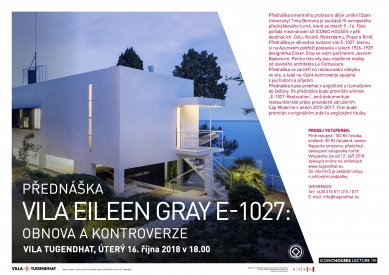
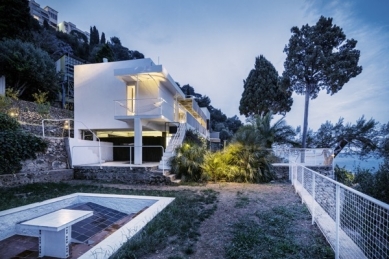
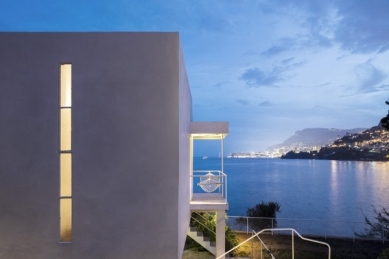

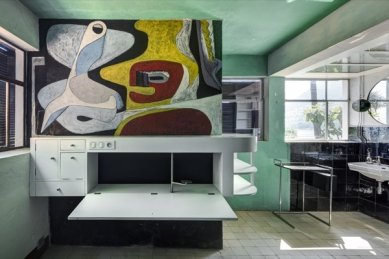
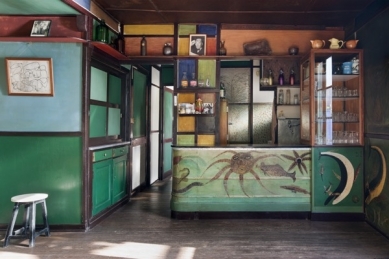
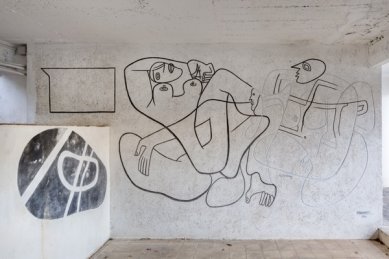
1 comment
add comment
Subject
Author
Date
O den dříve v Praze
10.10.18 03:38
show all comments












